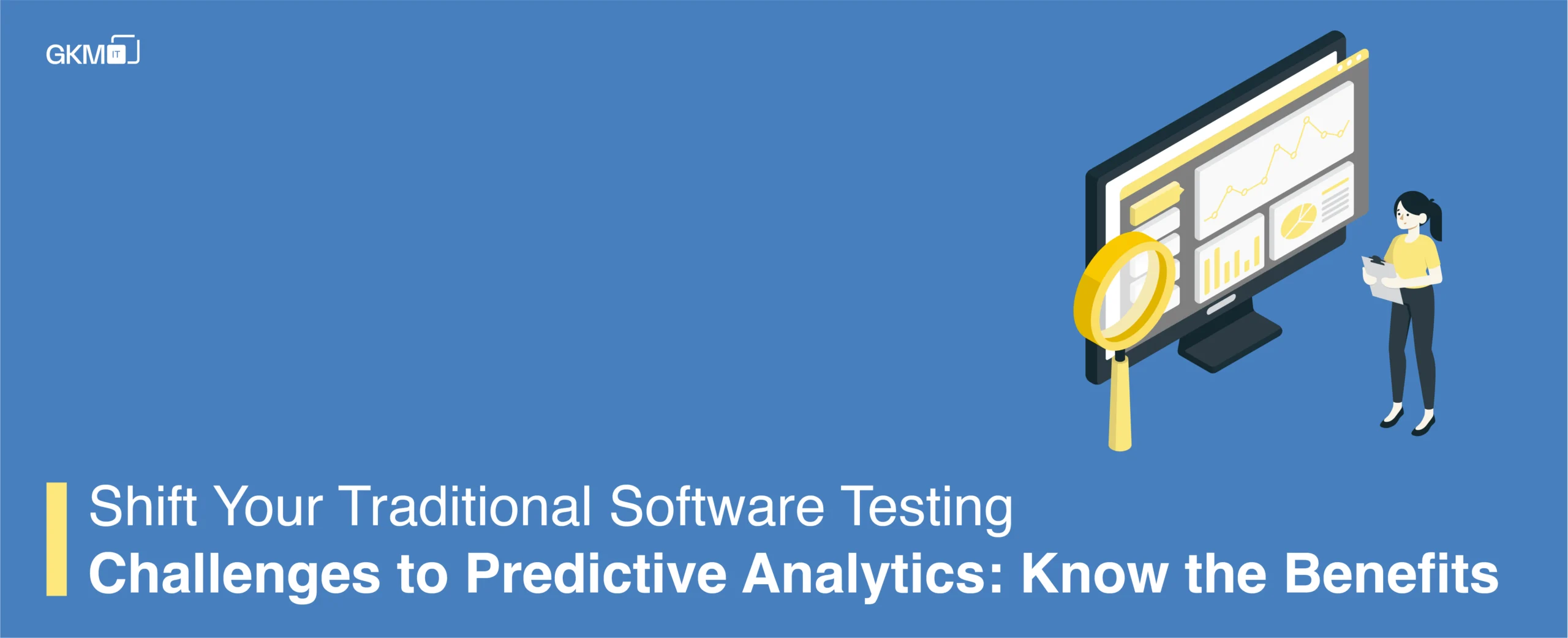
Shift Your Traditional Software Testing Challenges to Predictive Analytics: Know the Benefits
Predictive analytics is a widely used concept and applied across industries and businesses to derive inferences, reach conclusions and business decisions. Traditional quality assurance is shifting gears and adopting new responsibilities. There is an increased need for a team who will take an analytics-based approach towards next generation QA. quality and speed needs to be achieved to intensify the pressure on the development team and check the challenges, risk and failure coming in way.
One of the greatest highlights of implementing quality assurance is its ability to foresee the future failures and view past data sources. Predictive analysis helps businesses extract important information from data sets by simple implementation of statistical algorithms and machine learning. This helps in estimating future trends and generating patterns and identifying failure points. For making proactive decisions such type of forecast and data prediction is very much needed.
Learn how predictive analytics reduce time-to-market
Predictive analysis implements multiple algorithms to process the data namely regression algorithms and machine learning. Quality assurance and testing is a complex activity and involves many dependent variables. It is very important to efficiently manage delivery of expected results. To perform software testing smoothly, analytics effectively leverage and streamline everything.
It is not a one time activity but it is a continuous effort conducted to analyse data. It constantly generates analytics during the software development process. It continues to add business value towards the end of the development process by storing data and analysing analytic solutions. To deliver results efficiently the process needs a good amount of data churned from the software cycle.
Digital transformation is changing business dynamics and plays an important role in quality assurance and delivering strong solutions while dealing with customer base. There is very little scope of error for competing organizations. In the testing process, analytics help support teams bring down the testing costs and cut down testing efforts. It ultimately helps businesses reach the market faster and cut down chase.
Advantages of predictive analytics
- Consumer research
It is a high time to adopt a customer-centered research strategy in comparison to a demand-focused approach. Predictive research permits a customer- based research approach. Prescient investigation permits test-stage client-centered views. Organizations demonstrating prescient will effectively accomplish advance change.
- Knowledge is richness
Testing tasks with applications gather information and establish logs, records which lead out different defaults if the test is done. By pointing at the issues, the analysis team will understand and this will improve the client experience.
Calculations permit an ideal arrangement and misleading occasions to be identified. Prescient examination upholds the assessment of future breeze by checking the rates dependent on earlier assessment data.
- Slushy analysis
Customers are king and thus it is very important for businesses to pay heed to client’s comments and feedback. Sentimental analysis and research allows considering the input of consumers on different apps and goods in social network tracking. The entire process is faster and smoother in a nostalgic theoretical system.
How consumers’ demands are obtained? Through proven means like observational methods, it is helpful to provide perspective. If an organisation pays awareness to consumer reviews it will help them solve challenges and generate better results and leave a remarkable impression on the minds of clients.
- Better defect detection

Fault detection helps an organisation boost its quality. It is the first step in enhancing efficiency as it easily identifies defects. Predictive analysis is the future of quality assurance service as it securely diagnoses flaws in available data. With predictive techniques the software team will surely reach the underlying cause of errors.
- Improve testing quality
Predictive analysis proves winner by contrasting research performance dependent on item advertising sources of info and continuous client inputs. The prescient examination helps QA to ensure consumers receive necessary details.
- Simplifies research operations
A lot of knowledge is obtained in software formation and evaluation procedures. Making use of software should be assessed. Predictive analysis is applied to examine further effects on consumer service.
- Capital saving and efforts
Predictive modelling in predictive analytics keeps time and resources and advertises the commodity with speedy imperfection suspension and improved performance. An organization distinguishes types of glitches by analyzing previous manufacturing errors and play errors to current features or innovative techs.
- Predictive analytics fill gaps in testing
By using machine learning, artificial intelligence and Big data the missed aspects of predictive analytics can be revealed during testing. Predictive analytics incorporated several techniques from data mining, statistical modelling, artificial intelligence and machine learning to analyze historic and current data to predict possible future patterns, trends and user behaviour.
Final thoughts
Predictive analytics is an ongoing process and collecting real-time feedback from customers throughout the service period of a product helps enhance the customer experience and future releases of new products. Testing is all about exceeding user demand for a powerful experience. Speed and reliability can be ensured while optimizing both cost and time. This is howpredictive analytics is helping QA to achieve desired results. GKMIT have a team of expert quality analyst who ensures zero error in product production process and gives better insightsof business to entrepreneurs.